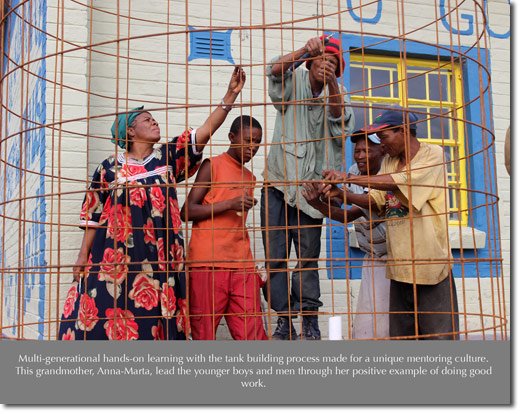In a land of contrast, mystery and years of imperialism, a small village of over 300 people on the edge of the Kalahari in Namibia germinated a new permaculture resiliency project in January of 2012. In talking with the headman of the village, he shared that their people, the San Bushmen, have lived in harmony with the land as hunter gatherers for eons. They are often cited as the first peoples of Africa and very likely all of humanity may have descended from their ranks many millennia ago.
The village elder sadly shared that colonialism has destroyed the San migratory way of life — a hunter gatherer tradition that was sustainable for thousands of years. He told us that they were no longer allowed to roam freely and trophy hunters destroyed the vast herds of game that formed their principal supply of food. Both Black and White farmers alike built up huge herds of cattle that destroyed the ecology of the Kalahari and subsequently the foods that had been their staple diet. They soon found they had to work for the farmers to be able to feed their families and hence a cycle of poverty and separation from their cultural roots ensued.
Although rarely recognized in the histories of the west, a similar unfolding of separation from our ancestral sustainable way of living has been a part of all our stories at some point in our history. Somewhere deep in our bones we can truly empathize with the plight of these people. The village of Vergenoeg came to be out of the displacement of the San and that of the Damara peoples who eventually had to settle to survive. You can see and feel the the years of gathered grief that are evident in the very fabric of the village in both prominent and subtle ways. Yet, there are vast cultural roots that keep the people cohesive in their plight for a sustainable future.
Seven years ago an inspired Canadian named Kimberly Cornish visited the village, fell in love with the land and the people, and felt that she could eventually facilitate some positive and lasting projects to help the people remember their gifts and build their capacity and resilience — and that of the land. Ever since then she has been building her skill set and experiences to prepare her for this vision that has led up to this project. More
